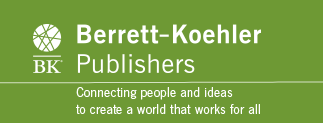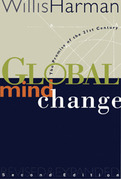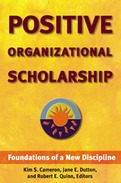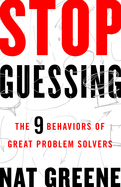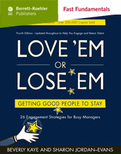1998
Revolutions are generally thought of as large-scale, bloody upheavals involving whoe countries and societies. But there are quieter revolutions that begin in the individual mind and create the kind of change that may be even more significant. By deliberately changing their internal image of reality, people are transforming the world. Right now we are living through one of the most fundamental shifts in histroy-a change in the actual belief structure of Western industrial society.
Global Mind Change, first published in 1988 and revised and expanded by the author just before his death in 1997, connects every major field of human endeavor in its exploration of the possibilities for social transformation through internal change. Harman, whose career spanned both the technical (electircal engineering) and psychological sciences, examines the role of consciousness in five areas:
o Mature science, which validates subjective, religious, and spiritual insights along with objective data as a way of describing reality
o Spirituality and consciousness research, which shows the compatibility between the world's religions and the insights of thousands of years of exploration of consciousness
o Health and healing, where the mind's role is increasingly recognized as a crucial influence on human wellness
o Psychology and psychotherapy, where research into unexplained phenomena and exceptional mental and physical abilities proves the only human limits are those we believe in
o Economics and management, where managers are utilizing brain-mind research to release employees' creativity, and corporations are addressing global issues of poverty, security, and the environment
Revolutions are generally thought of as large-scale, bloody upheavals involving whoe countries and societies. But there are quieter revolutions that begin in the individual mind and create the kind of change that may be even more significant. By deliberately changing their internal image of reality, people are transforming the world. Right now we are living through one of the most fundamental shifts in histroy-a change in the actual belief structure of Western industrial society.
Global Mind Change, first published in 1988 and revised and expanded by the author just before his death in 1997, connects every major field of human endeavor in its exploration of the possibilities for social transformation through internal change. Harman, whose career spanned both the technical (electircal engineering) and psychological sciences, examines the role of consciousness in five areas:
o Mature science, which validates subjective, religious, and spiritual insights along with objective data as a way of describing reality
o Spirituality and consciousness research, which shows the compatibility between the world's religions and the insights of thousands of years of exploration of consciousness
o Health and healing, where the mind's role is increasingly recognized as a crucial influence on human wellness
o Psychology and psychotherapy, where research into unexplained phenomena and exceptional mental and physical abilities proves the only human limits are those we believe in
o Economics and management, where managers are utilizing brain-mind research to release employees' creativity, and corporations are addressing global issues of poverty, security, and the environment
2008
“At their center, great organizations such as America's armed forces are the product of great leaders. This fantastic book reveals the keys to success within the military culture, as well as relevant and practical application tools for creating strong leaders today.”
—Stephen R. Covey, author of The 7 Habits of Highly Effective People and The 8th Habit: From Effectiveness to Greatness
What distinguishes strategic leadership? According to top U.S. Army generals, the difference lies in the discipline of thinking. Because the problems strategic leaders face are often multi-faceted and can involve ethical dilemmas, these leaders must move beyond thinking tactically and take a longer term, broader approach to finding solutions. Through the U.S. Army War College and other senior-service colleges, the Army teaches strategic thinking to its officers, developing some of the most esteemed leaders of our time.
Strategic Leadership: The General's Art provides aspiring leaders with an understanding of the behavior and competencies that make a good strategic leader. In line with the curriculum followed by senior officers attending the U.S. Army War College, this book teaches leaders how to think strategically in a volatile, uncertain environment and thereby to provide transformational leadership and shape outcomes.
With contributions from senior military leaders as well as experts in the fields of strategic leadership, systems and critical thinking, and corporate culture, this invaluable reference shows readers how to move from mid-level manager to strategic-thinking senior executive.
Strategic Leadership: The General's Art provides aspiring leaders with an understanding of the behavior and competencies that make a good strategic leader. In line with the curriculum followed by senior officers attending the U.S. Army War College, this book teaches leaders how to think strategically in a volatile, uncertain environment and thereby to provide transformational leadership and shape outcomes.
With contributions from senior military leaders as well as experts in the fields of strategic leadership, systems and critical thinking, and corporate culture, this invaluable reference shows readers how to move from mid-level manager to strategic-thinking senior executive.
While the concept of positive organizational scholarship encompasses the examination of typical and even dysfunctional patterns of behavior, it emphasizes positive deviance from expected patterns. Positive Organizational Scholarship examines the enablers, motivations, and effects associated with remarkably positive phenomena --- how they are facilitated, why they work, how they can be identified, and how researchers and managers can capitalize on them. The contributors do not adopt one particular theory or framework but draw from the full spectrum of organizational theories to understand, explain, and predict the occurrence, causes, and consequences of positivity.
Positive Organizational Scholarship rigorously seeks to understand what represents the best of the human condition based on scholarly research and theory. This book invites organizational scholars to build upon and extend the positive organizational phenomena being examined. It provides the definitional, theoretical, and empirical foundations for what will become a cumulative body of enduring work.
- Path-breaking scholarly volume exploring the dynamics in organizations that lead to extraordinary individual and organizational performance
- Establishes a new field of study in the social sciences
- Offers practical guidance for managers, as well as a future research agenda for understanding and enabling positive organizational behavior
2017
Bad problem solving costs individuals and society incalculable amounts of time, money, and sanity. In this book Nat Greene—who's been solving hard problems professionally for over twenty years—shares nine behaviors anyone can adopt to find solutions to even the most seemingly intractable problems.
The problem with most problem solving, Greene says, is that it's not problem solving at all: it's guessing. We have an idea of what might work and we try it out. If that doesn't work, we try something else. And so on. It's inefficient at best, and with really hard problems there are simply too many variables for guessing to work. Greene shows you how to adopt the behaviors great problem solvers use to arrive at solutions efficiently—without guessing. He illustrates them with examples ranging from everyday issues like fixing a malfunctioning garage door to stopping frequent breakdowns at a chemical plant (saving millions of dollars) to addressing the scourge of poverty in sub-Saharan Africa. So stop guessing and start solving today!
